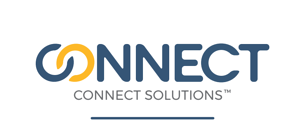Most businesses have at least some idea about employee productivity: Highly productive employees are good news, and not-so-productive employees are probably not so great for your company. There’s a lot more to it than that, however; these eight statistics will open your eyes to some revealing truths about employee productivity.
8. EMPLOYEE PRODUCTIVITY IS DECLINING
A 2016 report from the US Bureau of Labor indicated what employers have been fearing all along: Employees are less productive now than they were. What’s going on? Many employers are worried about the trend—but they’re also a bit confused. While they’ve been encouraging efficiency and productivity, many businesses are now wondering if those are the be-all, end-all statistics for their firms.
While efficiency and productivity are important, so are less “productive” activities such as ideating and discussing ideas with peers. Companies that spend lots of time brainstorming new ideas or working in teams might not appear as productive in the traditional sense.
7. HIGHLY ENGAGED EMPLOYEES ARE MORE PRODUCTIVE
The Workplace Research Foundation reported that highly engaged employees were much more likely to have above-average productivity, to the tune of 38%. That means that highly engaged employees are almost twice as likely to have above-average productivity.
6. SICK DAYS TAKE THEIR TOLL
One of the reasons highly engaged employees may be more productive is that they take fewer sick days. On average, firms reporting high employee engagement had an average of about 2.5 sick days per employee. Firms with weaker engagement reported a rate almost three times higher: just a little over six sick days per employee on average! Clearly, your employees can’t be as productive if they’re showing up to work less often.
5. THE INTERNET ENABLES NON-PRODUCTIVITY
About 65% percent of employees reported that they use the internet during the workday for non-work purposes. Many admitted to trading stocks, watching sports, using company email for personal purposes, and shopping online. All of this adds up to a 40% loss of productivity for businesses.
4. EMPLOYEES DON’T FEEL ENGAGED
Remember how engaged employees are more productive than their disengaged counterparts? That’s good news! The bad news is that a whopping 70% of American employees do not feel they are engaged at work. That’s the majority of the workforce.
If employers want their employees to be more productive, they need to work on their employee engagement strategies. Unfortunately, there’s more bad news on that front: While 90% of employers felt that having an employee engagement strategy was important and could make a difference to their business, only about 25% of employers actually had a strategy.
3. HAPPY EMPLOYEES ARE ALSO MORE PRODUCTIVE
Happy employees are not the same as engaged employees, and while engagement boosts employee productivity more, happiness is also a significant factor. In fact, some surveys found that employee happiness boosted productivity by about 12%. A study on salespeople suggested that happy sales reps had greater sales than their unhappy peers: They sold 37% more on average.
2. THE HIGHEST PERFORMING WORKERS TAKE BREAKS
The top 10% of productive employees tend to work, on average, 52 minutes before they take a break. Those breaks are about 17 minutes long. That means these employees are on break for nearly 30% of their workday!
That might sound like a lot, and you might be tempted to call these people slackers, but chances are they work very hard in concentrated bursts, and then take a well-deserved break to refuel their brains. That allows them to be more efficient.
1. SLEEP DEPRIVATION MEANS LOST PRODUCTIVITY
Tired employees are less productive than their well-rested counterparts—amounting to $63 billion in lost productivity for American companies. Encourage employees to get more rest rather than pulling all-nighters to get that big project done. Next time someone suggests instituting company nap time, you might consider it!


